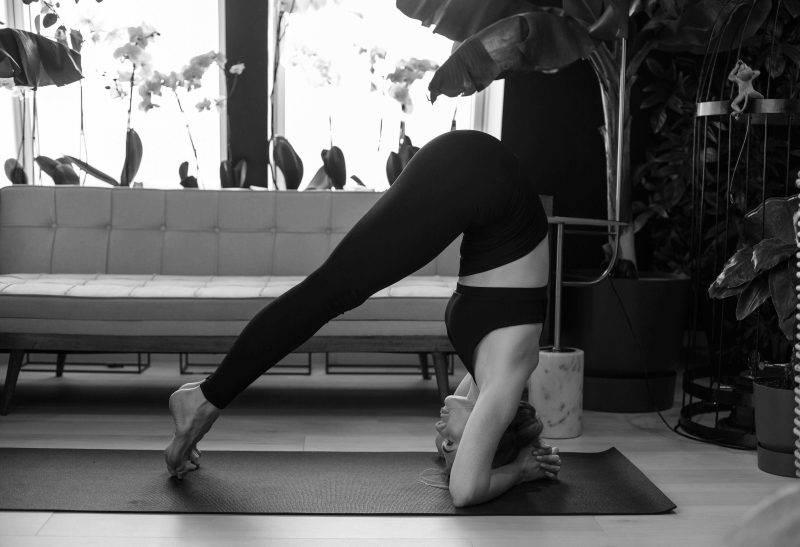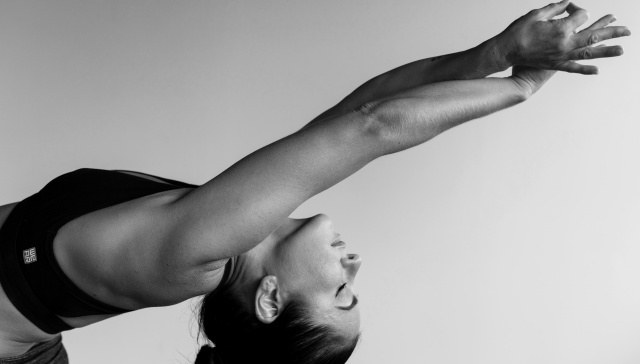Iyengar Yoga

The origin of Iyengar Yoga: BKS Iyengar
The word Iyengar Yoga comes from its founder: BKS Iyengar.
B.K.S. Iyengar turned to yoga as a teenager after suffering from a series of illnesses, including typhoid, tuberculosis and malaria.
He learnt yoga in Mysore from his brother-in-law, Tirumalai Krishnamacharya, who is often credited as the father of modern yoga.
A fast learner he began teaching the practice to European and American visitors to India in the 1950s. One of his students was esteemed violinist Yehudi Menuhin who invited Iyengar to lead classes in Europe, raising the international profile of Iyengar and yoga alike.
In 1966 he published the book ‘Light on Yoga’ which has been described as the bible of modern yoga and has sold over three million copies. In 1975 he established his principal school Ramamani Iyengar Memorial Yoga Institute in Pune, India.
Iyengar Yoga
Iyengar and Ashtanga yoga come from the same heritage – BKS Iyengar and Pattabhi Jois (the teacher who developed ashtanga) were both taught by Tirumalai Krishnamacharya.
Developing his own method of yoga which is a form of Hatha Yoga, BKS Iyengar placed primacy on the physical alignment of the body, ensuring each pose was achieved and held in the correct manner and perfected through consistent practice. Iyengar was also instrumental in establishing the use of props in practice such as bricks or straps to help students gradually achieve poses with accuracy.
Iyengar Yoga has spread across the Western world since the 80s, establishing an official association in the UK in 1983 which holds a convention every June. B.K.S. Iyengar passed away in 2014, and Geeta Iyengar, his daughter, died in 2018. However, certified teachers and pupils still travel to Pune to practice and learn at RIMYI with his family or disciples.
Natarajasana, the Dancer Pose (above) is the yoga pose represented on the official iyengar yoga logo.
Iyengar Yoga Teachers
Looking for an Iyengar yoga class? Book with our Iyengar yoga teachers Paul Jackson, Irina Zoteeva, Alice Chadwick and Valentina Salaris.
Iyengar Yoga Classes
Iyengar Yoga is a deep practice working with long-held postures, correct alignment and a peaceful mind.
The Iyengar method established the use of props in yoga such as bricks, blocks, blankets, straps, chairs, stools, ropes. The prolificacy of props in your practice may depend on the teacher.
Iyengar Yoga classes follow a monthly cycle of group postures (called the Pune schedule) and you will be encouraged to attend the same class week on week to abide by this:
- Week 1: standing poses
- Week 2: forward bends and twists
- Week 3: backbends
- Week 4: restorative poses and pranayama
Classes are focused on alignment and detail with very precise instructions that require concentration and tenacity to follow.
Inversions are common in Iyengar yoga, you'll learn the shoulder stand in year 1, and it is recommended to stick to beginners class until you are comfortable with Headstand (Sirsasana)
Iyengar focuses on the body, rather than the breath or the mantras. However, 3 Oms and the mantra ‘Yogena Cittasya Padena Vacam’, can be sung at the beginning of classes at more advanced levels.
An Iyengar Yoga class normally lasts around 90 minutes for beginners and two hours for advanced students. You should avoid eating for four hours before class and take your last drink of water twenty minutes before entering. Water is not allowed in class and you’ll be expected to practice sockless.
Shorts are recommended attire as leggings can cause your feet to slip in certain postures. More advanced students will wear shorts with elasticated legs (Pune shorts) although it’s not mandatory or expected from beginners. Workshops and retreats are also commonly organised where you can explore twice a day deeper, longer practices.
Who Can Practice Iyengar Yoga?
The use of props allows virtually anyone to take an Iyengar class regardless of age, physicality or mobility
Yoga for stiff people
Your fingers can't touch the floor? put some bricks under them. Hard to sit cross-leg? Sit on a block or folded blankets. No wonder we see more men in Iyengar classes than in other types of yoga!
Yoga for Beginners
Teachers demonstrate postures in Iyengar classes, so if you've never practised before, seeing the teacher do the pose before you give it a try will help. The slow pace and the use of props will help you enter the pose the right way, and align your body to prevent injuries. The level required to leave the beginner’s classes is being able to practice headstand
Yoga for Pregnant women
Yoga is not recommended during the first three months of pregnancy, but you can practice after the 3rd month (and after asking your doctor!). Many Iyengar practitioners have blessed inversions you only do in Iyengar classes, hanging in ropes upside down, and some practice headstands until the day of birth!
Iyengar Yoga Benefits
If you practice Iyengar Yoga regularly a few times a week, it can help fight insomnia, anxiety and depression, strengthen your core and immunity and increase flexibility and endurance. It has been known to help pupils with conditions as serious as MS or Parkinson’s Disease.
Online Iyengar Yoga
There wasn't much of Iyengar Yoga online before the Covid 19 lockdowns. Iyengar yoga is very much about getting adjusted during classes, so the recorded online classes didn't really work.
But live stream is a different story: teachers are live and can see their students - so Iyengar teachers started teaching on Zoom during lockdown, and many of them still are!
We are Iyengar practitioners here at Live Yoga Teachers, and we created this platform to make it easier for yoga teachers to teach online.
Iyengar Yoga Teacher Training
Becoming an Iyengar teacher is one of the most difficult certifications in yoga, requiring knowledge of Sanskrit and human anatomy. Three years of intense practice of asanas and at least 3 years of mentoring are required to become a certified Iyengar Yoga Teacher.
Famously disciplinary and tough on pupils, the Iyengar teacher training has recently evolved into a mentoring program:
"If you’ve attended Iyengar yoga classes regularly for a minimum of three years and have a good standard of practice in the Level 1 āsanas, you can begin to train as a teacher. The mentorship period will last a minimum of three years, but may take longer."
"As a trainee, you’ll be expected to attend regular classes with your mentor and will progress to demonstrate and assist during class as well as undertaking various written assignments and attending peer-group sessions."
Iyengar yoga studios
The most famous Iyengar studio in London is what students call “maida vale” from the name of the tube station nearby, in West London on the Bakerloo line.
The studio is a purpose build building on the ground of a house where Guruji himself was teaching and living; the place is big, bright, and comfortable with all the props required.
Another renowned Iyengar yoga centre is located on the other side of the Thames: the Iyengar Yoga Institute South London (IYISL). Other studios in London with Iyengar classes are yoga loft and yoga home.
 Live Yoga Teachers
Live Yoga Teachers
